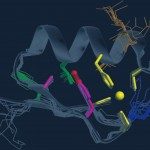Link to Pubmed [PMID] – 39436890
Link to DOI – 10.1371/journal.pone.0308868
PLoS One 2024 ; 19(10): e0308868
Microorganisms have long been suspected to influence the outcome of immune-related syndromes, particularly autoimmune diseases. Type 1 diabetes (T1D) results from the autoimmune destruction of the insulin-producing beta cells of pancreatic islets, causing high glycemia levels. Genetics is part of its aetiology, but environmental factors, particularly infectious microorganisms, also play a role. Bacteria, viruses, and parasites influence the outcome of T1D in mice and humans. We used nonobese diabetic (NOD) mice, which spontaneously develop T1D, to investigate the influence of a parasitic infection, leishmaniasis. Leishmania amazonensis is an intracellular eukaryotic parasite that replicates predominantly in macrophages and is responsible for cutaneous leishmaniasis. The implication of Th1 immune responses in T1D and leishmaniasis led us to study this parasite in the NOD mouse model. We previously constructed osteopontin knockout mice with a NOD genetic background and demonstrated that this protein plays a role in the T1D phenotype. In addition, osteopontin (OPN) has been found to play a role in the immune response to various infectious microorganisms and to be implicated in other autoimmune conditions, such as multiple sclerosis in humans and experimental autoimmune encephalomyelitis (EAE) in mice. We present herein data demonstrating the role of OPN in the response to Leishmania in NOD mice and the influence of this parasitic infection on T1D. This exploratory study aimed to investigate the environmental infectious component of the autoimmune response, including Th1 immunity, which is common to both T1D and leishmaniasis.


